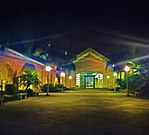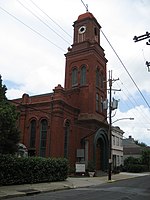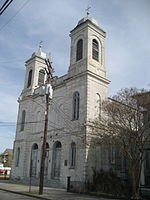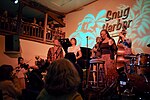Rice Mill Lofts
Buildings and structures in New OrleansIndustrial buildings and structures in LouisianaIndustrial buildings completed in 1892Residential buildings in Louisiana

Rice Mill Lofts is a five-story residential building in New Orleans, located in the bohemian Bywater neighborhood, near the Mississippi River. It houses 69 lofts, townhouses and studios, and is located next to the New Orleans Center for Creative Arts (NOCCA). Mariza, a restaurant, opened in 2013.
Excerpt from the Wikipedia article Rice Mill Lofts (License: CC BY-SA 3.0, Authors, Images).Rice Mill Lofts
Montegut Street, New Orleans
Geographical coordinates (GPS) Address Nearby Places Show on map
Geographical coordinates (GPS)
| Latitude | Longitude |
|---|---|
| N 29.9624 ° | E -90.0477 ° |
Address
Montegut Street 522
70117 New Orleans
Louisiana, United States
Open on Google Maps








